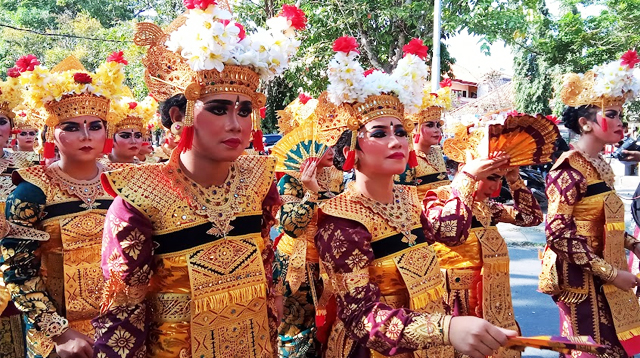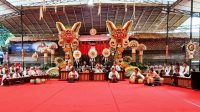BALINESE dance is not just a captivating art performance, but also a deep reflection of the spirituality, traditions, and philosophy of the Balinese people. With meaningful movements, distinctive facial expressions, and accompanying gamelan music, each Balinese dance conveys stories and values having been passed down from generation to generation.
This article will review the various types of Balinese dance, the philosophical meaning behind each movement, and their important role in traditional ceremonies and art performances.
The Diversity of Balinese Dance
Bali has various types of dances grouped based on their function, including sacred dance, classical dance, and entertainment dance. Each has its own uniqueness and meaning.
Sacred Dance—Sacred dance is usually performed in religious rituals at temples or holy places. Some examples:
- Rejang Dance: A dance danced by women in groups in traditional ceremonies as a form of respect for the gods. This kind of dance has some variants such as Rejang Dewa, Rejang Renteng, Rejang Bengkol et cetera.
- Barong Dance: Tells the story of the battle between good (Barong) and evil (Rangda), which symbolizes balance in life. It has some variants like Barong Ket, Barong Bangkal, Barong Macan, Barong Landung, Barong Kedingkling, Barong Gajah, Barong Brutuk, Barong Naga et cetera.
- Sanghyang Dance: A trance dance believed to be a medium of communication with ancestral spirits or gods. Like both dances above, this one also has some variants such as Sanghyang Dedari, Sanghyang Jaran, Sanghyang Deling et cetera.
Classical Dance—This dance developed in the royal environment and has complex movement patterns as well as strict rules. Some famous classical dances include:
- Legong Dance: A dance performed by young dancers with agile movements and dynamic eye expressions, usually telling legendary stories.
- Gambuh Dance: One of the oldest dances in Bali that combines drama, music, and dance in its performance.
Entertainment Dance—This dance is more recreational and is often performed in cultural events or tourist shows. For example:
- Kecak Dance: A typical dance involving dozens of men sitting in a circle, making rhythmic “cak-cak-cak” sounds, and telling the story of the Ramayana. This dance is performed daily at some stages in favorite tourist destination in Bali like Ubud, Batubulan and Uluwatu.
- Janger Dance: A social dance between male and female dancers who reciprocate pantun (a four-lined verse consisting of alternating, approximately rhyming lines) accompanied by gamelan.
- Joged Bumbung: A social dance having interaction with the spectators where they are invited to dance together. This dance is often performed at life-cycle rite of the Hindus, like 3-month ritual for a baby, wedding and dinner with show at hotels.
Philosophical Meaning Behind the Movements
The movements in Balinese dance are not only aesthetic, but also having deep meaning. Every hand position, eye gaze, and foot movement symbolize certain spiritual and philosophical values. For example:
- Agem (main body posture) reflects the balance between the universe and humans.
- Tanjak (upward hand movement) symbolizes the relationship between humans and Sang Hyang Widhi (God).
- Nyenget or nyeledet (sharp and focused gaze) shows emotional expression and communication in dance.
Conclusion
Balinese dance is more than just entertainment; it is a cultural heritage that contains deep spiritual, aesthetic, and philosophical values. With the diversity of dances that exist, every movement in Balinese dance carries meaning and stories that connect the past, present, and future.
Both in traditional ceremonies and art performances, Balinese dance continues to be an important part of people’s lives and a major attraction in cultural tourism. It is no wonder that the beauty and depth of meaning of Balinese dance continues to captivate the hearts of anyone who witnesses it. (*)










